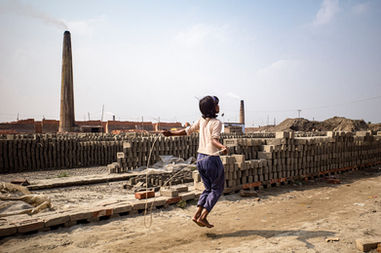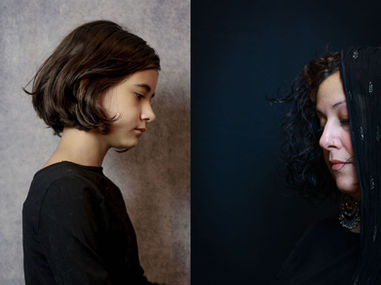
PICTORIAL STORY
July 19, 2024
CELEBRATION OF LIFE
Photography by Ahsanul Haque Fahim
Story by Karen Ghostlaw Pomarico
A passionate photographer from Bangladesh, Ahsanul Haque Fahim has immersed himself in the art of street photography. His visual stories capture the raw moments and genuine emotions amidst the perpetual chaos of the bustling streets of his city. It is a photographic exploration that Ahsanul finds motivating and inspiring. Ahsanul has found much inspiration in exploring and documenting urban and rural landscapes, creating a personal archive of these ever-changing environments. These environmental changes and challenges bring with them a new social consciousness, forcing the urban community to adapt and adjust to new dynamics in their social and environmental conditions. Ahsanul's street photography focuses on the nuances perceived in these evolutionary times.
“Through my work, I aim to illustrate the profound connection between people and their surrounding society, exploring how their lives are influenced and transformed by the forces of urbanization.”
-min.jpg)
Holi, also known as Dol Utsav, is one of the most important annual festivals of Hinduism. Devotees of the community around the world celebrate the day in harmony every year. Holi is celebrated predominantly throughout India, with its rich historical heritage, and deep-rooted community traditions, with a 90% majority of the population devoted to Hinduism. However, Bangladesh, once used to be part of the integrated India, is still rooted with the religious values of traditional Hinduism.
Here in Shankhari Bazar, located in the heart of traditional old Dhaka, is an area of Bangladesh steeped with history of cultural customs and traditions but where the majority of the community is Muslim, and only 5% devoted to Hinduism. This creates diversity and a nonsectarian nation with coexisting harmony.
“Despite being outnumbered, the Hindi community aren’t shy of celebrating their festival in grand fashion with complete participation.”
The streets of Shankhari Bazar fill with locals and visitors alike. The joy of sharing inspiration and celebrating together makes this a very powerful, emotional and spiritual experience. Over the years, the Shankhari Bazaar has become a central hub of this celebration, with people making a pilgrimage there to experience this traditional celebration firsthand. Its enduring charm and cultural significance continue to draw crowds, making it an integral part of Bangladesh's festive landscape.
The celebration of Holi, also known as 'Dol Utsav', the throwing of colored powder is much more than a festive tradition. It is a vivid manifestation of broader symbolic meanings that resonate deeply within the community. This colorful practice celebrates different facets of life, nature and human relationships, capturing the essence of the festival in a way that is both profound and communal. This tradition stands as a living testament to the interconnectedness of these elements, providing a profound and joyful way for individuals and communities to connect, celebrate and renew their bonds with each other and the world around them.
Although the festival revolves around greeting each other and covering each other with powdered colors, the 'colors' are only metaphorical. Holi is a celebration of life itself. The bright saturated colors symbolize the different shades of life, each representing a different aspect of the human experience. These shades encompass a wide range of emotions, from joy and love to sorrow and introspection. They also signify luck and blessing, reflecting the positive energies and good fortune we encounter. The colors also represent serenity and hope, reminding us of the peace and optimism that sustains us. Playfulness, another essential hue, highlights the importance of joy and spontaneity in our lives. Together, these colors create a rich tapestry that makes us human and teaches us to live joyfully. They encourage us to embrace the full range of our experiences, recognising that each hue contributes to the beauty and complexity of life. Who knows what life would be like without these vibrant hues? It is through their interplay that we learn, grow and find meaning in our existence.
“As the title suggests, it’s the celebrations of life. The bright colors symbolize the different various shades of life. Shades such as emotions, auspiciousness, blessing, tranquility, hope and playfulness. In combination these shades make us humane and teach us to live joyfully. Who knows how life would have been or would be, without these shades?”
Socially, the festival acts as a powerful equalizer, breaking down barriers and promoting inclusivity. During Holi, distinctions of age, gender, social status and caste are temporarily set aside. The act of throwing colors at each other symbolizes the erasure of these boundaries and fosters a sense of unity and collective identity. It promotes social cohesion and strengthens community ties as people come together in a spirit of joy and solidarity.
Religiously, the practice has significant spiritual significance. In the context of Dol Utsav, the throwing of color is associated with the divine love of Radha and Krishna, embodying themes of devotion, playfulness and divine union. It is also in keeping with the wider Hindu belief in the cyclical nature of life, death and rebirth, with the festival serving as a reminder of the enduring nature of the soul and the eternal rhythms of existence.

The celebration of Holi or Dol Utsav in Bangladesh is a rich tapestry of cultural, spiritual and social significance that is embraced and celebrated around the world. Through Ahsanul's visual translations and evocative street photography, he captures the essence of this vibrant festival, showing the raw emotions and dynamic interactions that unfold in the streets of Dhaka. Holi is not just a festival of color; it is a celebration of life itself, reflecting the diverse and profound experiences that make us human. The tradition of throwing powdered colors symbolizes the myriad shades of our existence, from joy and love to hope and tranquility, and reminds us of the interconnectedness between individuals and their environment.
As Ahsanul's photographs illustrate, these celebrations are a testament to the resilience and capacity for joy of the human spirit, offering a rich, multifaceted expression of cultural identity and a joyful way for communities to connect and renew their bonds. Through the celebration of Holi, we are reminded to live joyfully and embrace the full spectrum of life's colors.
Ahsanul has shared his work with us before on The Pictorial List, his visual stories are loved by our community and add a beautiful continuous thread to the ever-growing fabric of The Pictorial List. We are always grateful for his support and brilliant contributions. Follow his links and read more about him on our website.

The views, thoughts, and opinions expressed in the text belong solely to the author/s, and are not necessarily shared by The Pictorial List and the team.
























































